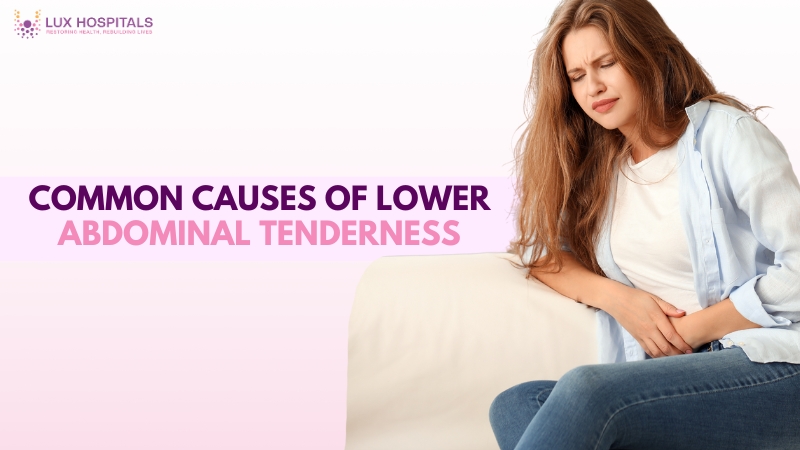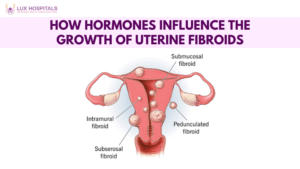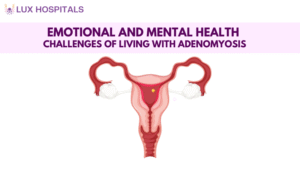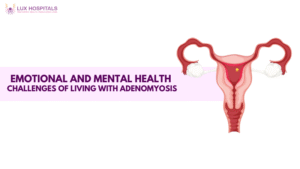Lower Abdominal Pain: Common Causes Explained

Your everyday routine may be disturbed by lower abdominal pain. Both mild and severe discomfort are possible because of several medical issues. Early diagnosis and effective treatment of lower abdomen discomfort depend on understanding its underlying causes. Understanding the root causes of suffering is essential. Determining the cause of reproductive, urinary, or digestive problems can lessen discomfort and avoid complications.
Top Reasons for Lower Abdominal Pain
Lower abdominal pain can result from many health issues, ranging from mild digestive problems to serious infections or reproductive concerns. Understanding the root cause helps in managing the symptoms effectively. This section explores 10 common reasons behind lower abdominal pain and highlights when it’s time to seek medical attention.
1. Irritable Bowel Syndrome (IBS)
IBS is a long-term illness that affects the large intestine. It often leads to lower abdominal pain, bloating, gas, and irregular bowel movements. Usually, with cramping, the pain subsides as gas or stool is passed. IBS is more prevalent in women and can be brought on by hormone fluctuations, stress, or nutrition.
2. Urinary Tract Infection (UTI)
A urinary tract infection, or UTI, can cause lower abdominal pain, especially when urinating. One of the other symptoms is an intense desire to urinate. Fatigue, murky urine, and a burning feeling are further symptoms. Prompt antibiotic treatment is required to prevent the infection from spreading to the kidneys.
3. Menstrual Cramps (Dysmenorrhea)
Women frequently experience lower abdominal pain as a result of menstrual cramps. Occurring just before or during menstruation. It may radiate to the thighs or back, and the range can vary from mild to severe in intensity. The uterus contracts as a result of hormonal changes, causing cramping.
4. Pelvic Inflammatory Disease (PID)
PID is an illness of the female reproductive system that is typically brought on by gonorrhea or chlamydia, two sexually transmitted infections. It causes pain during sexual activity, fever, abnormal discharge, and lower abdominal pain. PID can cause chronic pelvic pain and infertility if left untreated.
5. Appendicitis
Inflammation of the appendix results in appendicitis. Infected, causing sharp lower abdominal pain, often on the right side. The pain typically worsens with movement and is accompanied by nausea, vomiting, and fever. This is a medical emergency requiring surgical removal of the appendix.
6. Ovarian Cysts
The ovaries have fluid-filled sacs called ovarian cysts, which, if they rupture or become large, may cause lower abdominal pain. Women might also experience irregular periods, pelvic pressure, or bloating. Most cysts are harmless, but some require monitoring or surgical removal.
7. Endometriosis
Endometriosis is the development of tissue outside the uterus that mimics the uterine lining. Causing chronic lower abdominal pain. The pain often intensifies during menstruation and can also lead to infertility, fatigue, and digestive problems. Imaging and occasionally laparoscopy are needed for diagnosis.
8. Constipation
Lower abdominal pain is frequently the result of constipation, which causes infrequent, complex, or painful bowel movements. Until the colon is cleaned, it may cause discomfort, bloating, and a feeling of fullness. Pain can be lessened by increasing water, fiber, and physical activity.
9. Bowel pouch infection
Bowel pouch infection of the colon wall’s pouches. It frequently results in pain in the lower abdomen, especially on the left side. Fever, nausea, and irregular bowel movements are among the symptoms. In extreme situations, antibiotics, dietary adjustments, or even surgery can be necessary.
10. Ectopic Pregnancy
When a fertilized egg implants outside the uterus, usually in the fallopian tube, it is known as an ectopic pregnancy. Dizziness, vaginal bleeding, and severe lower abdominal discomfort are symptoms of this potentially fatal illness. To avoid rupture and internal bleeding, prompt medical intervention is necessary.
When to Consult a Doctor?
While some cases of lower abdominal pain are temporary and manageable at home, certain warning signs should never be ignored. You should consult a doctor if:
- The lower abdominal pain is severe or persistent (lasting more than a few days).
- Vomiting, a fever, or unexplained weight loss accompanies the pain.
- You experience unusual vaginal bleeding or discharge.
- There is blood in your urine or stool.
- The pain worsens with movement or doesn’t improve with rest.
- You have a history of reproductive or digestive issues, and the symptoms return or intensify.
- You suspect you may be pregnant and experience sharp or one-sided lower abdominal pain.
Conclusion
Lower abdominal pain is a symptom with a wide range of possible causes, from mild digestive issues to severe reproductive or urinary conditions. Understanding what’s behind your discomfort is the first step toward effective treatment and relief. If you experience frequent, severe, or unusual pain, don’t ignore it—consult a healthcare professional for a proper diagnosis. Early intervention can prevent complications and restore comfort and peace of mind.
Frequently Asked Questions
Menstruation may be the cause of lower abdominal pain in women. Cramps, ovarian cysts, endometriosis, or infections like UTIs or PID. It may also be caused by digestive issues such as IBS or constipation. For a proper diagnosis, it is imperative to get medical help if the discomfort is severe or chronic.
You should be concerned if the lower abdominal pain is severe, sudden, or accompanied by symptoms like fever, vomiting, or vaginal bleeding. Pain that doesn't go away or becomes worse should be taken seriously because it could be a sign of an ectopic pregnancy or appendicitis. Seeking medical advice guarantees appropriate assessment and care.
Yes, trapped gas can cause lower abdominal pain due to pressure in the intestines. It may be accompanied by bloating, cramping, and a feeling of fullness. While usually harmless, persistent gas pain may signal underlying digestive conditions like IBS or food intolerances.
Diagnosing lower abdominal pain involves a physical exam, medical history, and sometimes imaging tests like an ultrasound or CT scan. Urine analysis and blood tests could also check for infections or organ dysfunction. The diagnosis depends on associated symptoms and the location and nature of the pain.
Fast relief from lower abdominal pain depends on the cause—over-the-counter painkillers, heat therapy, or antispasmodics may help in minor cases. Staying hydrated, avoiding trigger foods, or passing gas can also bring relief. For persistent or severe pain, always seek medical advice.




















